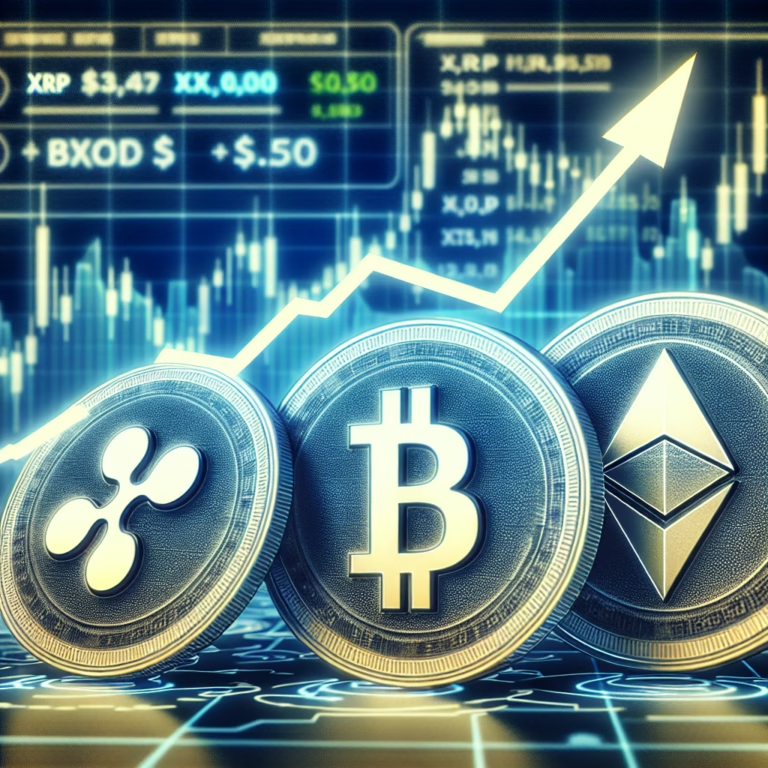
In a groundbreaking move for the global financial and cryptocurrency sectors, Russia’s Central Bank is reportedly considering the use of XRP for cross-border payments, further solidifying the digital asset’s prominence in international finance. The news comes as Elvira Nabiullina, Governor of the Bank of Russia, announced the official launch date for the digital rouble in July 2025—a pivotal milestone in Russia’s ongoing efforts to integrate blockchain technology into its financial systems.
This development is part of Russia’s broader vision to modernize its domestic and international financial frameworks, with the introduction of a central bank digital currency (CBDC) serving as a core element. The use of XRP in conjunction with the digital rouble marks a significant step toward improving the efficiency and security of cross-border payments while providing an alternative to traditional financial systems like SWIFT, particularly in light of geopolitical challenges.
XRP’s Role in Russia’s Cross-Border Payment System
As one of the leading cryptocurrencies tailored for international payments, XRP has a well-established reputation for facilitating fast and cost-effective transactions. Unlike traditional systems, which can take days to process and are often burdened with high fees, XRP offers near-instant settlement at a fraction of the cost. This aligns seamlessly with Russia’s goal of enhancing the efficiency of its financial transactions, especially when considering the country’s current geopolitical isolation due to sanctions.
Research conducted by the Bank of Russia’s Novosibirsk Innovation Laboratory explored the potential integration of Ripple’s platform, which is powered by XRP, into Russia’s cross-border payment infrastructure. The findings highlighted several key benefits of Ripple’s blockchain solution:
- Instant Settlements: XRP offers almost instant cross-border transfers, eliminating the delays commonly associated with traditional payment networks.
- Low Transaction Costs: Ripple’s platform drastically reduces the fees involved in international transactions, making it an attractive alternative to systems like SWIFT.
- Cryptographic Security: The Ripple network ensures robust transaction security through cryptographic solutions, mitigating the risk of fraud or interference.
- Account Reconciliation: Ripple simplifies the reconciliation process between international banks, reducing administrative errors and operational burdens.
- Real-time Exchange Rate Calculations: By using XRP, Ripple provides real-time cross-rate calculations, essential for accurate and efficient currency exchanges.
The integration of XRP could be a game-changer for Russia, offering a way to bypass the limitations imposed by traditional financial systems—many of which are entangled in the West’s sanctions. This new payment method could offer Russia a more autonomous and efficient avenue for conducting international trade and financial transactions.
The Implications of a Digital Rouble Backed by XRP
The digital rouble will function as a legal tender alongside the physical rouble, fully backed by the Bank of Russia. Its introduction reflects a global trend, as many other nations, including China with its digital yuan, are moving forward with their own CBDC projects. The digital rouble, coupled with XRP’s cross-border capabilities, is set to position Russia at the forefront of blockchain and digital currency innovation.
The decision to explore XRP as part of its cross-border payment strategy signals Russia’s intent to leverage the cryptocurrency’s proven track record in facilitating global transactions. However, the success of this integration will depend on several factors, including regulatory compliance and market stability.
Challenges Facing XRP’s Adoption for Cross-Border Payments
Despite the advantages that XRP offers, several challenges remain for Russia and other countries considering its adoption:
- Regulatory Oversight: As Russia moves forward with its digital currency, ensuring compliance with both domestic and international financial regulations will be critical. This includes adhering to anti-money laundering (AML) and combating the financing of terrorism (CFT) rules, which are key to maintaining global financial stability.
- Volatility of XRP: While XRP provides fast and cost-effective settlements, the cryptocurrency market is notorious for its volatility. Fluctuations in the price of XRP could introduce risks for cross-border transactions, especially if no risk mitigation measures are implemented.
- Ripple’s Legal Disputes: The ongoing legal battle between Ripple and the U.S. Securities and Exchange Commission (SEC) poses another challenge. The SEC’s lawsuit, which alleges that XRP is an unregistered security, raises questions about the asset’s legal status. This uncertainty could hinder widespread adoption until the case is resolved.
The Road Ahead for Russia’s Blockchain Ambitions
The confirmation of the digital rouble’s launch by 2025 and the potential use of XRP for cross-border payments are significant steps in Russia’s efforts to modernize its financial systems. These developments underscore the country’s commitment to embracing blockchain solutions to enhance efficiency, security, and independence in its international transactions.
As more countries pursue the adoption of central bank digital currencies, Russia’s model, which incorporates both a national digital currency and blockchain solutions like XRP, could serve as a blueprint for other nations looking to modernize their financial systems. However, the success of these initiatives will depend on Russia’s ability to navigate regulatory challenges and manage the inherent risks of cryptocurrency volatility.
In conclusion, XRP’s potential role in Russia’s cross-border payment system could revolutionize how the country conducts international financial transactions. With the launch of the digital rouble on the horizon, the world will be closely watching how Russia’s foray into blockchain technology unfolds and whether it can leverage XRP to overcome the limitations of traditional financial systems.






